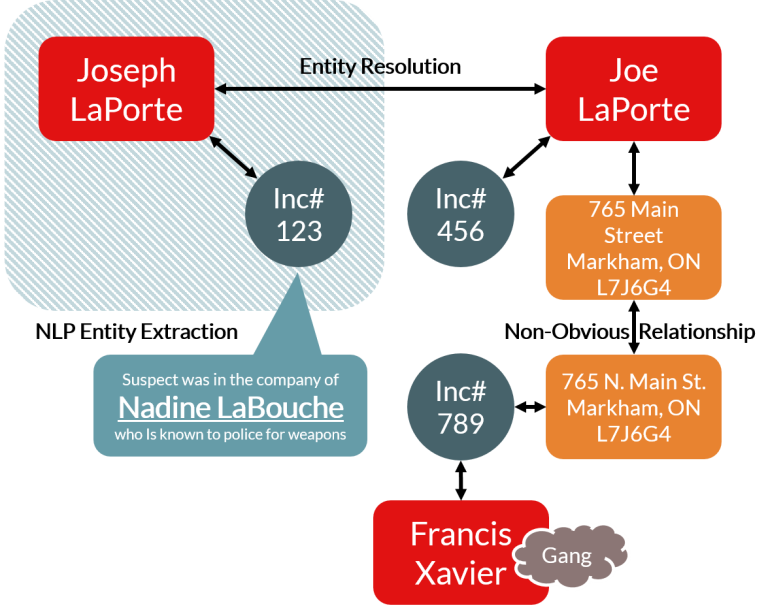IMT Intel:ID – Intelligence-Led Policing
Entity resolution and non-obvious relationships are the most critical components in law enforcement data management, yet Records Management Systems do not possess even the most basic tools that can support these features. Duplicate records are attributed to either intentional deception or classified as unintentional errors or omissions. If duplicate records exist, front-line officers are likely only looking at half of the information. One record might reflect a non-violent occurrence while the second record may contain details of a violent crime that could include firearms, gang affiliations or other unknown relationships. If a front-line officer only accesses the “non-violent” information without realizing the complete picture of the offender, they will not be sufficiently prepared. (Not exactly what you would consider intelligence-led policing.) Intelligence-led policing uses data and crime intelligence to support objective, informed decision making that both maximizes police efficiency and officer safety.
Not having a complete picture of an individual is only the tip of the proverbial iceberg. Social context through both known and unknown relationships allows investigators to expand the depth of inquiry from a simple request on a person to also include those persons, organizations or objects around the subject of inquiry. Using IMT’s Intel:ID, along with i2 Analysts Notebook, an investigator can plot two seemingly unrelated records to determine if a path exists. The depth of separation (relative strength) used for relationship detection is configurable (default is seven degrees) to whatever makes sense for your mission. This allows investigators to operationalize the threat assessment on organized crime and identify looser gang affiliations. This is also true of any law enforcement-led investigation. Non-obvious relationships enhance the information required to make informed decisions and promote officer safety.
“Data + Context = Insight”
Christian Gheorghe
Retrospective analysis using entity resolution and non-obvious relationships is very important when crime analysts are supporting active investigations or when detecting patterns in crime through accumulated knowledge. Increasingly in law enforcement and intelligence analysis, there is a paradigm shift away from retrospective analysis towards a more centralized technology center with the advent of real-time crime centers. By increasing data from Open-source information (OSINT) and Human-source intelligence (HUMINT), the real-time data supports active alerting which brings intelligence-led policing to the front-line officer. The IMT Intel:ID appliance supports mobile applications that include a full dossier based on all the data within the application as well as external data that can be pulled from discrete sources of information and alerts based on pre-set criteria such as gang affiliation or history of violence.
Given the proliferation of different reports and data types that are often scattered across both structured and unstructured sources in law enforcement, establishing the complete context around a person of interest remains difficult and time consuming. Natural language processing (NLP) provides a capability to identify and extract critical content from unstructured data and make that available for entity resolution and non-obvious relationship detection. IMT Intel:ID comes bundled with our own open-source NLP trained to extract person names from existing repositories of unstructured or textual information.
Certainly, operationalizing an advanced intelligence-led policing initiative is not always simple. Objectives are not always clearly stated and consensus building within the various departments and command staff remains difficult. To further exacerbate this, priorities are not always shared and competing interests can derail any ability to move forward. Having incomplete information about a person of interest reduces operational efficiency and places officers at risk. The IMT Intel:ID appliance offers quick time to value, reduced cost, improved operational efficiency while getting ALL the data to front line officers to increase officer safety. This integrated approach enhances intelligence sharing, coordination and strategic deployment.
The shaded area in figure 1 reflects what an officer or analyst can see without the IMT Intel:ID integrated approach for law enforcement and intelligence. In crime and intelligence analysis, the ‘analysis’ process is 80:20 – 80% preparation and 20% analysis. With Intel:ID, data consolidation is immediate so analysts can spend 100% of their time analyzing the data.






